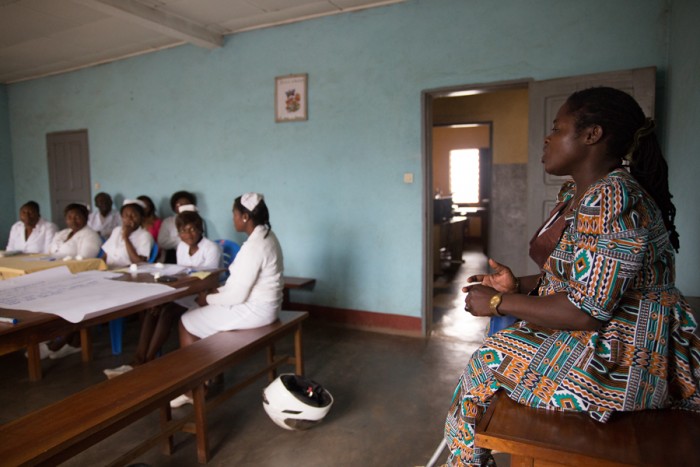May 5th, 2016 by Rachel | Tags: Disability, Health, HIV/AIDS, Peace Corps | No Comments »
As I have been working with persons with disabilities in the Northwest region of Cameroon, I have been learning that many of them have been left out of HIV education and services. When I did my community needs assessment early in my service, I learned that one-fourth of persons with disabilities whom I interviewed never received education on HIV/AIDS, and about half of the persons with disabilities whom I interviewed knew what was anti-retroviral drug and how to prevent the disease. During the time when I was writing my community needs assessment report, I read case studies about how persons with disabilities faced barriers in receiving HIV services and education throughout the continent of Africa. The biggest obstacles were discrimination, stigma and ignorance. There were healthcare workers who wrongly believed that persons with disabilities are not sexually active and therefore, they are not in risk of HIV/AIDS when they are in just a great or in a greater risk of acquiring HIV/AIDS.
When I presented to a group of persons with disabilities in a nearby village, Bali, on HIV prevention many members said there was an HIV testing campaign that happened not too long before I presented to them but they were never informed about the event and did not know about it until after the event.
At other presentations on HIV prevention, I have been astonished to learn how much knowledge persons with disabilities lacked in how HIV is transmitted and how they can prevent the transmission. The pre-tests scores were an evidence as many of them scored poorly.
Also, when I provided training to healthcare workers and mobilizers in Mbakaou, a rural village in Adamawa, the pre-tests showed that half of the participants had believed that persons with disabilities are not sexually active and are immune to HIV/AIDS.
Therefore, based on my speaking with persons with disabilities, reading case studies, and seeing the test results, I saw there was a need to provide training to healthcare workers on how to accommodate persons with disabilities when it comes to HIV education and services.
During the month of April, I hosted three trainings for healthcare workers on how to accommodate persons with disabilities when it comes to HIV education and services. Each training was provided to three separate health centers, Mezam Polyclinic, a small private hospital, Bamenda Regional Hospital’s HIV treatment center, the largest HIV treatment center in Bamenda, and Foundation Clinic, a small local clinic.
At the trainings, I covered these follow areas:
- What is disability
- What is it like to live with a disability
- Statistics
- How persons with disabilities are left out of HIV services
- Why do persons with disabilities have unique needs
- How can healthcare workers better reach out to persons with disabilities
- How can HIV services be more accessible for persons with disabilities
The training curriculum was developed based on the very successful training done in Mbakaou that resulted in positive changes for the community.
When discussing what is a disability, I explained to them the definition of disability and provided them a list of all types of disabilities such as mobility impairment, deafness, and blindness and all causes such as accidents and genetics.
Throughout the training, I did three hands on demonstrations with them that put them in situations where they felt disabled. For the first demonstration, I asked them to take their two hands and have their finger tips touch each other except for the index fingers, which I asked them to fold down. Then I asked them to lift their thumbs, then lift their first fingers and then lift their pinky fingers. They were able to lift all of those fingers. Then I asked them to lift their ring fingers, and they were unable to lift. When I saw their frustration in trying to lift their ring fingers, I told them, “Imagine a person with a disability who has a body part that does not function at all. They try as hard as they can to get it to work, but they can’t.”
For the second demonstration, I gave each participant a piece of paper. Then I asked them to write their name on the paper. Then I asked them to write their name with the hand they do not normally write with. I then asked them how was writing with their non-writing hand. They said it was kind of hard. I told them, “This is the life of a person with mild disability. Imagine a person with disability who walks with a limp. The person can walk but at a slower pace and may not always be able to run. Imagine a person with visual impairment who can see a little bit. That person can’t see small prints but can read large prints. Imagine a person with some hearing loss. That person can hear some words but can’t pick up all words.”
Then I asked them to put the paper on their head and write with their normal writing hand. They giggled and expressed frustration by saying it was hard. I said, “This is the life of a person with moderate to severe disability. Imagine for those with mobility disability who have to use crutches to move around. Imagine a visually impaired person who can see but can’t read print at all. Imagine a person with hearing loss who can hear noises but cannot understand speech at all.”
Then I asked them to put the paper on top of their head again and write with their non-writing hand. They were all absolutely hysterical as they laughed while trying with great difficulties to write with their non-writing hand on a paper on top of their head. I said to them, “This is the life of those with severe disabilities. This is the life of a person who is bound to a wheelchair and cannot walk at all. This is the life of a person who is blind and cannot see a thing. This is the life of a person who is deaf and cannot hear a single sound.” It was a moment that made them say, “Aha!”
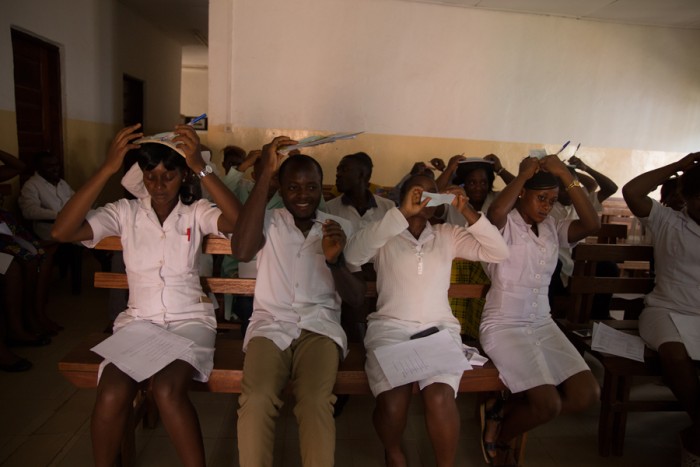

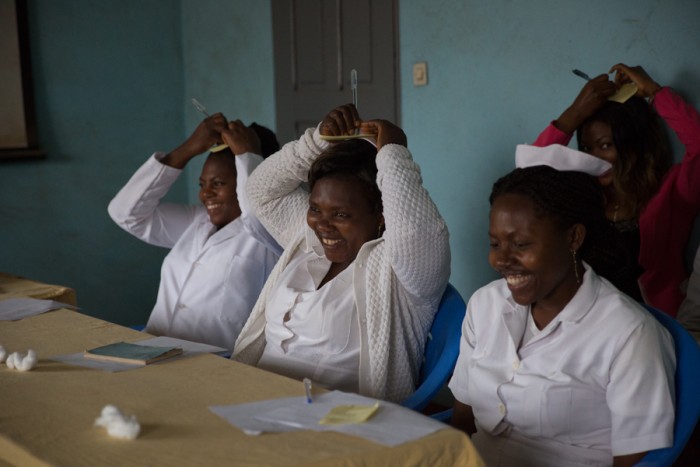
For the third and last demonstration, I gave everyone two cotton balls and asked them to put the cotton balls in their ears. I had one of my work partners read a text to them. Then when I asked them to take the cotton balls out of the ears and asked, “How well did you hear?” They all said that they couldn’t hear well. One woman raised her hand and said, “I now know that next time when I meet someone who can’t hear well, I need to be patient with the person, make sure I speak clearly and take the time to write down notes for the person.”
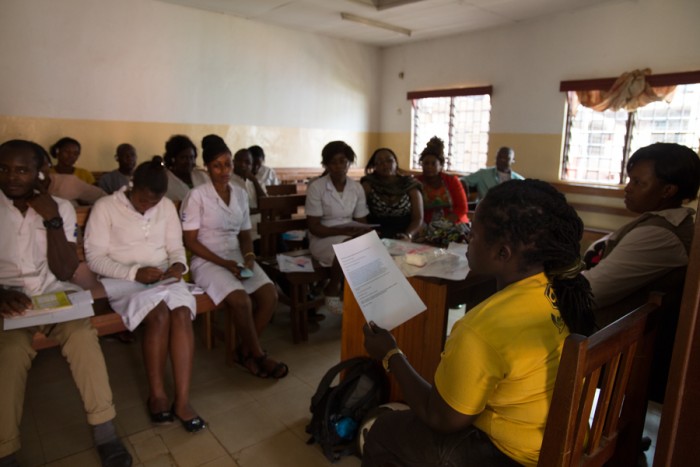
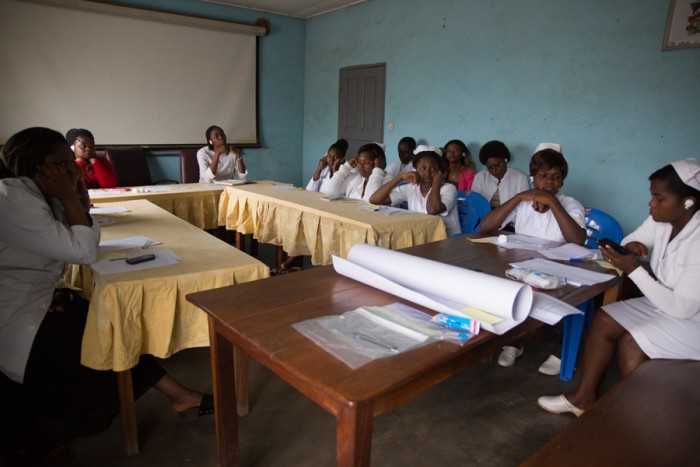
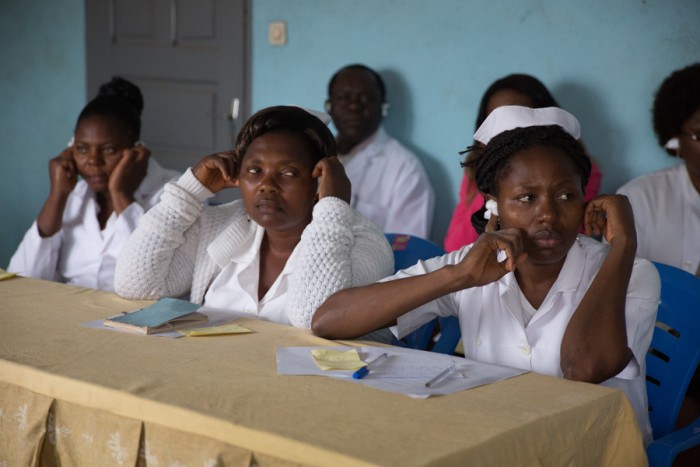
I shared statistics to help them better understand the situation of persons with disabilities in Cameroon. Here are the statistics I shared:
- There are one billion persons with disabilities – Fifteen percent of the population is persons with disabilities. (WHO)
- 95% of persons with disabilities are the poorest of the poor. (Peace Corps Act)
- Only 35% of persons with disabilities work while 77% of people without disabilities work.
- Three-fourths of all persons with disabilities living in low- and middle-income countries are women with disabilities.
- Sixty-five to 70% of women with disabilities who live in low- and middle-income countries live in rural areas.
- Women with disabilities face the challenge of preventing HIV because they are in increased risk for gender based violence and lack access to sexual reproductive health care services. (USAID)
- Only two percent of all Cameroonians have received formal education. (CUAPWD)
- Only 5% of women with disabilities are married while 50% of men with disabilities are married in Cameroon (Kiani).
Participants expressed shock and disbelief by the numbers especially about how many persons with disabilities have received education, how poor they are and how many persons with disabilities exist in the world.
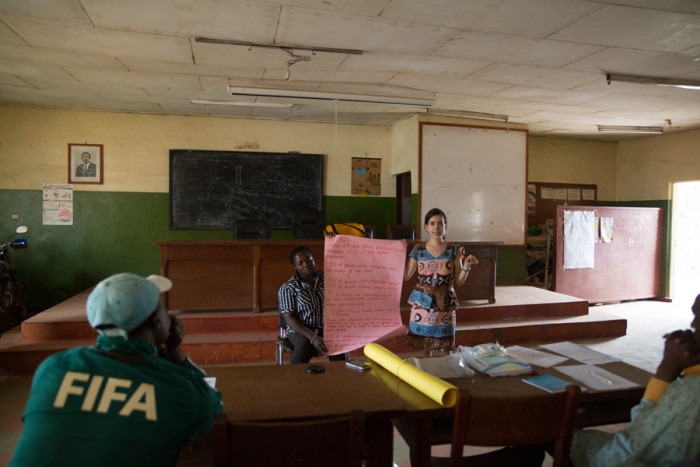
When talking with them about how persons with disabilities are left out of HIV services, I explained to them how educational services, which includes workshops and schools, are inaccessible to persons with disabilities as there are no sign language interpreters for those who are deaf and no braille for those who are blind. Also, some workshops and schools have stairs and no ramps for those who use wheelchairs or crutches. I also explained how persons with disabilities are not able to come to health centers for the same reason as why they are unable to go to educational services. I also explained to them about how they are not informed about HIV testing campaigns and sensitizations.
When explaining to them about why persons with disabilities have unique needs, I shared that because so few go to school, healthcare workers need to make sure they get education on HIV prevention from somewhere. Even when they are invited to HIV educational events, there is a need to ensure that accommodations are put in place such as providing a sign language interpreter, transcript, and braille and also make sure it takes place in a building that is accessible to those who have mobility disability. I also explained that persons with disabilities are already facing a stigma and so, when if they do become infected with HIV, they then face double stigma and greater discrimination. Also, they could become even more disabled if they are infected with HIV as HIV can affect the vision and movement of the body. They also need accommodations when receiving services.
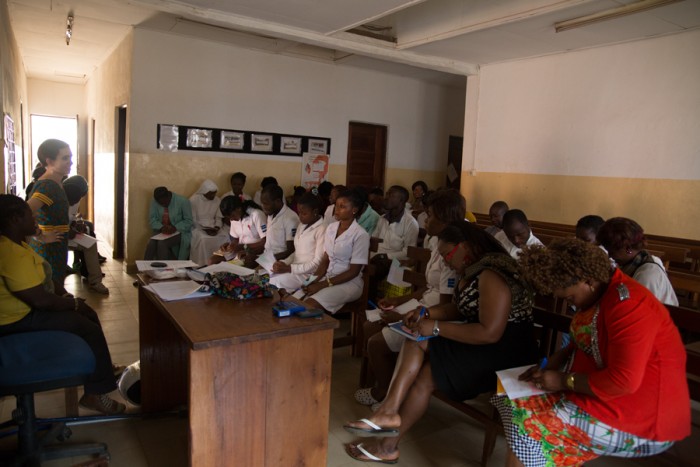
At the end of the training, we discussed how can healthcare workers reach out to persons with disabilities and provide accommodations. They shared great ideas which include:
- Create an informational video on HIV/AIDS in sign language
- Communicate more effectively with those who are hard of hearing and have low literacy level. Use simple language. Speak more slowly and have greater patience.
- Introduce sign language in nurse training schools
- Have all handouts translated to braille
The healthcare workers raised some very valid concerns which include:
- There are no funds for sign language interpreters. Even if they advise patients who are deaf to bring a family member, family members normally do not know sign language at all. Many deaf people are also illiterate, which means that communicating through writing is also not an option. Therefore there is no way for the family member and healthcare worker to know the issues that the patient is facing and how the patient is feeling if there is no way for the patient to relay the information to the family member or to the healthcare worker.
- There are also no funds for building ramps and adding an elevator. Elevator is a very rare sight in Cameroon.
- There are no funds to help transport persons with disabilities from their homes to the nearest HIV treatment center. Many persons with disabilities stay in their homes all day and never leave their homes.
In spite of the valid challenges that healthcare workers raised, they expressed gratitude for the training because they now know who they can consult when they need assistance in providing accommodations for persons with disabilities and that is, the Coordinating Unit of Association for Persons with Disabilities (CUAPWD), the organization with whom I’ve been partnering during my service. In other words, the trainings has helped, the health centers and CUAPWD, establish a relationship with each other.
